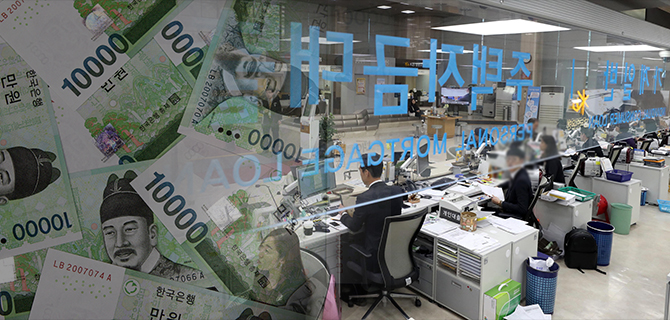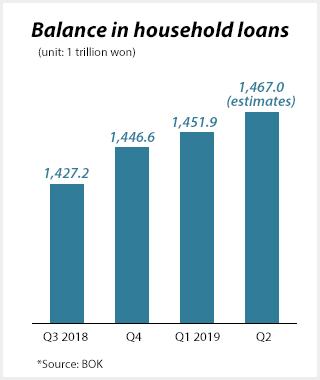
이 누리집은 대한민국 공식 전자정부 누리집입니다.

Biz News Korea(Eng)
- Collected
- 2019.08.19
- Distributed
- 2019.08.20
- Source
- Go Direct

The growth in household debt in South Korea in the second quarter picked up much faster than the previous quarter while savings dipped to record-low levels, underscoring worsening household income and debt risks to the fragile economy under structural and trade woes.
According to the Bank of Korea (BOK) on Sunday, household loans extended by commercial lenders and non-banking financial institutions gained 15.4 trillion won ($12.7 billion) during the April to June period from the previous three months. The figure didn’t include private loans from other financial firms including insurers and credit card companies.
The sharp gain in the second quarter is contrary to a plunge in private loans from 23.4 trillion won in the fourth quarter last year to 2.9 trillion won in the first quarter this year on the back of the government’s strict regulation and sluggish housing market.

The balance in household debt was estimated at 1,467 trillion won in the second quarter ended June, surpassing 1,451.9 trillion won in the previous quarter. If this growth continues, personal loans are expected to break another record in the coming months.
Experts worried that the snowballing household loans would put a damper on private consumption and corporate production and investment, adding to woes for the already sputtering Korean economy grappling with trade concerns.
In addition, the share of household deposits in total savings deposits reached the lowest since the related record keeping began in 1975 at 45.3 percent as of June, another sign of weakening domestic consumption. The figure has been on the steady decline from 51.4 percent in the same month in 2014 to 50.3 percent in 2015, 49.1 percent in 2016, 48 percent in 2017 and 46.8 percent, meaning that more and more households have become unable to afford savings out of financial struggles.
By Lee Yu-sup and Choi Mira
[ⓒ Pulse by Maeil Business News Korea & mk.co.kr, All rights reserved]









